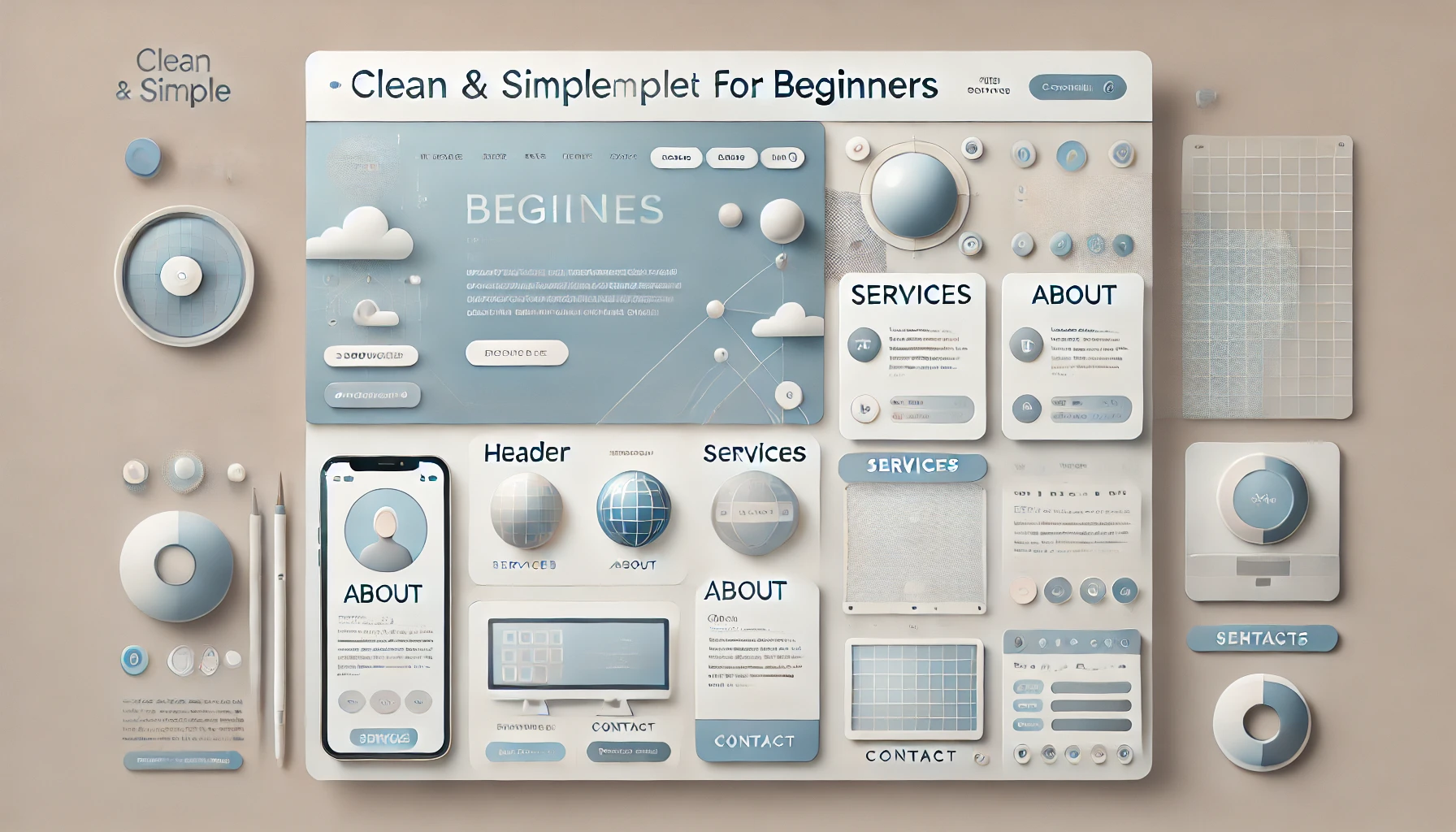Building a website from scratch can seem like a daunting task, especially for beginners. However, with the right approach, tools, and inspiration, anyone can create a functional and visually appealing website. This guide will walk you through website design and development ideas tailored for beginners, complete with practical tips, tools, and image ideas to enhance your project.
Why Start with Website Design and Development?
- Enhance Creativity: Website building encourages problem-solving and creativity.
- Expand Your Skill Set: Learning web development opens doors to new career opportunities.
- Personal Projects: Create blogs, portfolios, or e-commerce stores to showcase your interests or sell products.
- Business Growth: A website can help small businesses reach wider audiences.
Key Elements of Website Design
- Purpose and Goal:
- Decide the purpose of your website: Is it a blog, portfolio, online store, or information hub?
- Clearly define your goals for the site.
- User Experience (UX):
- Design with the user in mind. Ensure the site is easy to navigate.
- Use a simple and intuitive layout.
- Responsive Design:
- Ensure your website works seamlessly on desktops, tablets, and smartphones.
- Visual Aesthetics:
- Use complementary colors and readable fonts.
- Incorporate high-quality images and icons.
- Functionality:
- Test your website for broken links and loading speed.
- Ensure all forms and interactive elements work correctly.
Beginner-Friendly Website Ideas
1. Personal Portfolio
Showcase your work and achievements in a creative way.
- Sections to Include: About Me, Projects, Resume, Contact Form.
- Image Ideas: Profile photo, snapshots of completed projects, and mockups.
2. Blog
Share your thoughts and expertise on a topic you’re passionate about.
- Sections to Include: Homepage, Blog Posts, About, Categories, Search Bar.
- Image Ideas: Feature images for each blog post, thematic banners, and infographics.
3. E-Commerce Store
Sell handmade crafts, digital products, or dropshipping items.
- Sections to Include: Product Listings, Shopping Cart, Checkout, About Us.
- Image Ideas: Product photos, customer testimonials, and promotional banners.
4. Educational Website
Offer tutorials, guides, or courses.
- Sections to Include: Course Catalog, Blog, Resource Library, Sign-Up Form.
- Image Ideas: Screenshots of course content, tutorial diagrams, and icons.
5. Event Website
Promote an event, such as a wedding, conference, or charity fundraiser.
- Sections to Include: Event Details, RSVP Form, Schedule, Gallery.
- Image Ideas: Venue photos, event posters, and countdown timers.
6. Non-Profit Organization
Raise awareness and funds for a cause you care about.
- Sections to Include: Mission, Projects, Donation Page, Volunteer Sign-Up.
- Image Ideas: Photos of team activities, beneficiaries, and donation progress bars.
Tools for Beginners
1. Website Builders
- Wix: Drag-and-drop builder with customizable templates.
- Squarespace: Stylish templates with built-in analytics.
- WordPress: Highly flexible, ideal for blogs and advanced customization.
2. Design Tools
- Canva: Create banners, logos, and infographics.
- Figma: Design and prototype your website layout.
- Adobe Photoshop: Edit and optimize images.
3. Code Editors
- Visual Studio Code: Beginner-friendly and supports multiple programming languages.
- CodePen: Ideal for testing and sharing frontend code snippets.
4. Stock Image Sites
- Unsplash: High-quality free images.
- Pexels: Free stock photos and videos.
- Pixabay: A vast collection of free images and illustrations.
Image Ideas to Enhance Your Website
- Hero Images:
- Use high-quality images for the main banner.
- Example: A scenic background for a travel blog.
- Icons:
- Incorporate icons for navigation menus and call-to-action buttons.
- Example: Download free icon packs from sites like Font Awesome.
- Infographics:
- Create visually appealing charts and graphs.
- Example: Infographics summarizing blog content.
- Product Mockups:
- Showcase your products with realistic mockups.
- Example: Use tools like Smartmockups for e-commerce sites.
- Team Photos:
- Add pictures of your team for a personal touch.
- Example: Include team bios and candid work photos.
Steps to Develop Your Website
1. Plan Your Website:
- Sketch a sitemap outlining all the pages.
- Write down content ideas for each section.
2. Choose a Platform:
- Select a website builder or CMS based on your needs and technical expertise.
3. Pick a Template:
- Use a pre-designed template as a starting point.
- Customize colors, fonts, and layout to match your style.
4. Add Content:
- Write engaging text for each page.
- Upload images and videos to complement your content.
5. Optimize for SEO:
- Add meta titles and descriptions.
- Use keywords in your content.
- Compress images for faster loading speeds.
6. Test Your Website:
- Check functionality on different devices and browsers.
- Fix any broken links or errors.
7. Publish and Promote:
- Launch your website and share it on social media.
- Monitor analytics to track performance.
Tips for Beginners
- Start Small:
- Begin with a simple website and expand as you gain confidence.
- Focus on Content:
- Quality content is key to attracting and retaining visitors.
- Experiment:
- Test different designs and features to see what works best.
- Seek Feedback:
- Ask friends or mentors to review your site and provide constructive criticism.
- Learn Continuously:
- Follow online tutorials and courses to improve your skills.
Conclusion
Website design and development may seem challenging at first, but it’s a rewarding skill that opens up countless opportunities. By starting with beginner-friendly ideas and leveraging the tools and tips provided in this guide, you’ll be well on your way to creating a stunning website.
Remember, the key is to take small steps, focus on the user experience, and continuously improve your skills. Happy designing!







